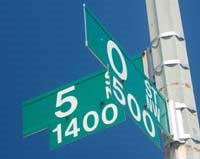Last Gun-related Post (for now, anyway)
A number of commenters on the previous two posts have basically told me I don’t know what I’m talking about, citing certain statistics and studies that supposedly prove that we’d all be safer if everyone carried a gun. I certainly wouldn’t claim expertise on the subject, so I was interested to read the op-ed piece in this morning’s WaPo co-authored by Police Chief Cathy Lanier, who one must assume does have considerable expertise. If you haven’t already, I’d suggest you read it.
I’m not totally uninformed on the subject, however, nor am I so naïve as to think arguments can change the mind of true believers. But in fact there are volumes of writings on both sides of the issue, and I think it’s fair to say that neither one is a slam dunk (though I obviously find one side more persuasive). So if you want to dive into these murky waters, you could do worse than to start with the Wikipedia articles on “Gun Violence in the
And for extra credit, class: Here’s a DOJ paper on the demographics of gun violence. Here’s another DOJ paper (from the Ashcroft years) on a program tried in St. Louis to get guns off the street. Here’s a Johns Hopkins study on strategies for reducing gun violence. Here’s a UN paper giving comparative crime statistics for countries around the world. (Homicide rates in the US are 2 to 4 times those in other developed countries in western Europe, Canada, Japan, and Australia.)
The leading academic proponent of the “guns make us safer” school is Gary Kleck, author of Point Blank: Guns and Violence in
Personally, I don’t think the macro crime statistics prove very much one way or the other, but if you’re inclined to delve into that sort of thing, the FBI publication Crime in the
--In 2005, there were 14,860 homicides in the
--Of 8,136 cases in which the relationship of the killer to the victim was known, 1823 of the victims were family members, 4234 were other known persons (acquaintance, neighbor, girlfriend, etc.), and 2070 were strangers to the killer.
--63% of the victims were between the ages of 17 and 34.
--Out of 9,251 cases where the circumstance of the killing was known, 11% occurred during a robbery, burglary or car theft; 45% occurred because of a romantic triangle, a booze- or drug-fueled brawl, or other argument (the last accounts for 42%)
--Just 1% of homicides by firearm by a private citizen were considered justifiable homicide.
Here are the violent crime rates (crimes/100K population) for DC and some other major eastern cities:
If you can find a consistent correlation between those figures and strict/permissive gun laws, you see more than I do.
So do your homework and make up your own mind. As for me, I’m with Chief Lanier.


4 Comments:
I've enjoyed reading people's various viewpoints and experiences around this topic. Thanks, Daddy Five-0h, for getting the discussion started.
See writings by John Lott. The stats you site do not really bear upon the case of self defense in that you do not have to kill someone to defend yourself. Secondly, many homicides are drug dealers killing other drug dealers. Is it just to deny the right of law abiding citizens to self-protection in the name of protecting criminals? Thanks for the dialog.
There is a simple solution (well not taht simple but it will be effective). AMEND THE US CONSTITUTION AND THE SECOND AMENDMENT. Rather than dilly-dally around with what you think it mean,s amend it to ban guns.
Like it or not, Shaw is the Sadr City of DC. As for me, I stuck my NRA sticker right under the bullet hole in the broken plate glass in my front door. Don't expect the current Poh-lease surge to last too much longer. Salaam.
Ray Milefsky
Post a Comment
<< Home